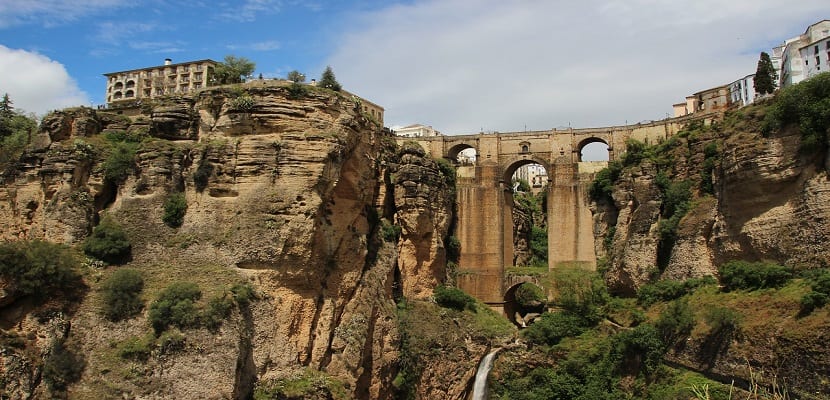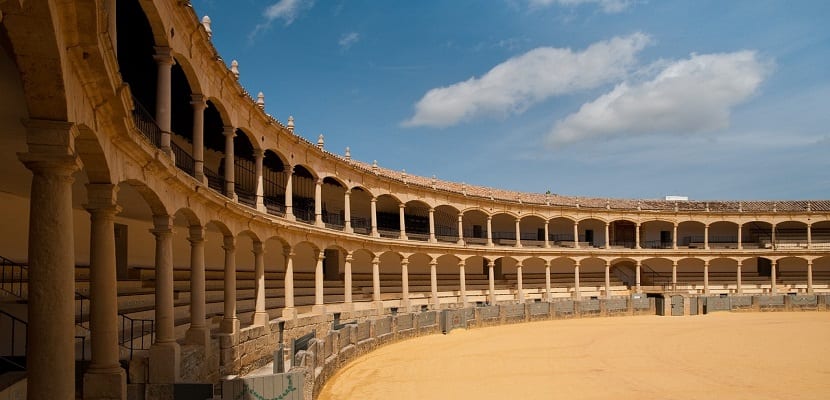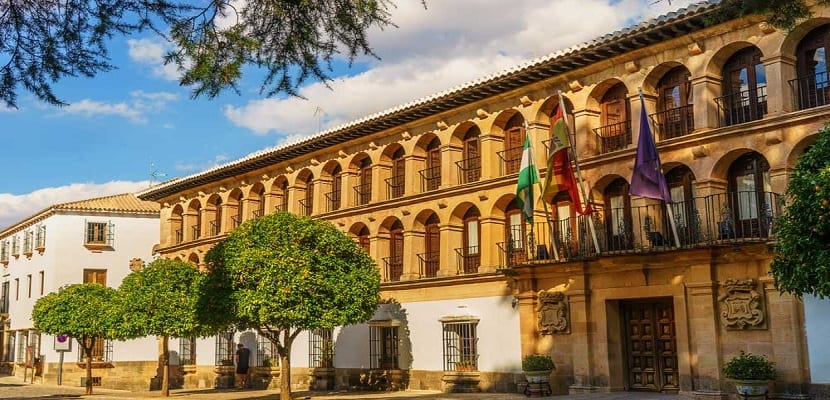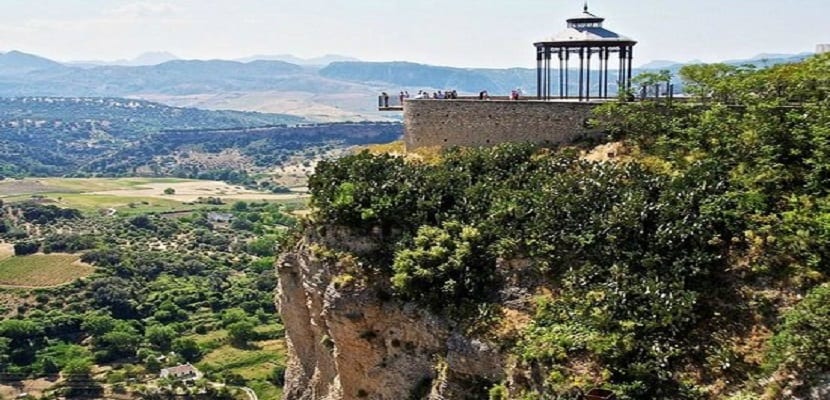
Image | Pixabay
Ronda is one of the oldest and most beautiful cities in Spain. It is located in the province of Malaga and its origins date back to Roman times and it was Julius Caesar who declared it a city for the first time in the XNUMXst century BC, although at that time it bore the name of Acinipo. Later, the Moors would change it to Izna-Rand-Onda, which with the passage of time derived in its current name.
Many are the peoples who inhabited these lands (Romans, Carthaginians, Visigoths, Arabs ...) and all have somehow left their mark on Ronda. Next, we walk through the streets of this old Andalusian town to get to know it a little better. Can you come with us?
Ronda divides its urban area on both sides of the so-called Tajo del Ronda, a gorge more than 150 meters deep. Its old town has been declared an Asset of Cultural Interest thanks to its most emblematic monuments that were designed in the XNUMXth century and that during the following century would help to forge that romantic image of the mountains and of the city itself, in which banditry and bullfighting would make a great impression on travelers.
Although that image may be fascinating, it is still a cliché. Ronda is much more diverse and extensive, as shown by all its tourist attractions.
Puente Nuevo

Image | Wikipedia
Its great hallmark is the New Bridge over the Tagus, together with the Plaza de Toros de la Real Maestranza de Caballería de Ronda.
Built in stone blocks taken from the bottom of the Tagus gorge, this 98-meter-high masterpiece made it possible to connect the old quarter of the town with the new one and made its urban expansion possible. In addition, inside it houses a modern Interpretation Center concept on the natural environment of Ronda and on this impressive work of engineering from the XNUMXth century.
To build it, more than 40 years were invested in total, being the architect José Martín de Aldehuela in charge. And if crossing it so many meters high is a magical experience, many say that the best way to enjoy its beauty is to contemplate it from below, at the foot of the Guadalevín river that runs through it. To get there we have to go down a path that leaves from the Plaza de María Auxiliadora.
From the bridge you can also see some houses hanging on the pit, which is why Ronda is twinned with Cuenca.
Bullring

Ronda is the oldest bullring in Spain for modern bullfighting. It is considered the cradle of modern bullfighting, which emerged in the XNUMXth century. The bullfighting boom led the Real Maestranza de Caballería de Ronda to build its famous plaza under the directives of Martín de Aldehuela, the same architect who designed the Puente Nuevo. The square was inaugurated at the fair in May 1785 with a bullfight in which Pedro Romero and Pepe Illo performed.
Its neoclassical façade with baroque details is striking, and it has an interesting stone façade. The gabled roof is covered with Arabic tiles and the grandstand is arranged on two superimposed levels with great elegance. It has one of the largest arenas in Spain and the capacity is 6.000 spectators.
Underneath it is the Ronda Bullfighting Museum, opened in 1984 to the public. This museum is dedicated to the Romero and the Ordóñez, the two great dynasties of Ronda bullfighters and to the history of the Royal Corps of the Maestranza de la Caballería de Ronda, owner of the square. There is also a collection of antique firearms.
Mondragon Palace

Image | Rustic Andalusia
The Palacio de Mondragón is the most significant civil monument in Ronda. It is believed that its origin is Muslim but when the most important works were carried out in the palace it was in Christian times after the conquest of the city in 1485. Inside you will find the Municipal Museum and some beautiful Moorish gardens that evoke bygone times.
Church of the Santa María la Mayor,

Image | Rustic Andalusia
After the conquest of the city, the Catholic Monarchs ordered the construction of this temple but it was not finished until the XNUMXth century, which explains the different artistic styles it presents. The Renaissance choir is one of the most significant elements of the church of Santa María la Mayor, as is the baroque altarpiece of the Virgen del Mayor Dolor. The image of the Virgin is attributed to the work of Montañés according to some researchers and according to others to "La Roldana".
Arab baths

Image | Rustic Andalusia
The Arab Baths of Ronda date back to the XNUMXth century and today it is the best-preserved thermal complex on the Iberian Peninsula. Following the Roman model, they are structured in three different areas: cold, warm and hot bath rooms. These baths were built next to the Arroyo de las Culebras, the ideal place for the water supply, which was carried out by means of a waterwheel system that has been preserved to this day.
They are located in the San Miguel neighborhood, on the outskirts of what was once the Muslim Medina of Ronda.
Town Hall

Image | Amare Marbella Beach Hotel
The construction of the current headquarters of the Ronda City Council, in the Duquesa de Parcent square, dates from 1734 and was once a militia barracks. The building has three floors and a basement. The façade is lintelled between pilasters and has on each side a coat of arms of Ronda and another of Cuenca. Both twinned cities. Inside, the impressive Plenary Hall and the Mudejar coffered ceiling stand out, located on the main staircase of the Town Hall.
Alameda del Tagus

Image | Tripadvisor
Next to the Plaza de Toros and on the edge of the Tagus cornice We find the Alameda del Tajo, an excellent tree-lined walk from the XNUMXth century that offers spectacular panoramic views of the Serranía de Ronda and the landscapes near the town.
The Alameda del Tajo is made up of five avenues full of different plant species (acacias, pines, cedars ...), which lead to a promenade with an impressive balcony located on the edge of the abyss.
The walk to the south joins the Paseo de Blas Infante to, through the terraces of the Parador Nacional de Turismo, conclude at the Puente Nuevo. The Vicente Espinel theater is located in the Alameda del Tajo.
These are some of the most interesting places to visit in Ronda, but the list is long. The visit to Ronda can be completed with the Palace of the Moorish King, the Palace of the Marquis of Moctezuma, the Santo Domingo Convent, the Acinipo Archaeological Site or the Ronda Wall, among other places.